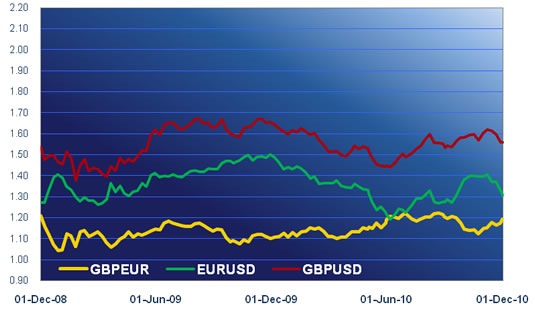– Manufacturing PMI at a 16-year high
– Somebody is buying pounds
Good morning. A chap in Grimsby is £440 worse off after being convicted of flashing his headlights to warn oncoming drivers of a police speed check. Odd though it may sound, encouraging others to observe the speed limit is a criminal offence; “obstructing a police officer”. The morality is intriguing. Taking the argument to its illogical conclusion it would be against the law to prevent a murder because it would deprive the police of their opportunity to make an arrest.
Illegal or not, the headlights were flashing yesterday to warn oncoming investors not to take the mickey out of sterling. After a rocky holiday week the pound hauled itself up by its bootstraps to regain a steady footing. It starts today stronger against everything, half a cent up on the US dollar and a cent higher against the euro. The pound set off higher as soon as the London market opened after the long weekend. It received additional assistance at mid-morning when the UK manufacturing purchasing managers’ index (PMI) hit 58.3, its highest level since September 1994. According to Reuters, “there was also talk a supranational entity was buying sterling/Swiss franc… which supported the UK unit.” The Bank of England figure for November’s mortgage approvals, which came out at the same time as the manufacturing PMI, was of relatively little help to the pound. At 48.0k it was marginally higher than October’s upwardly revised 47.3k but still pathetic in comparison with the good old days.
Euroland data were few and mostly unhelpful to the single currency. Unemployment in Germany went up by 3k and the index of French consumer confidence went down from -32 to -36. The first stab at euro zone inflation in December put it at 2.2%, up from 1.9% a month earlier, but it is not easy to extrapolate the increase into a rise in euro interest rates. Factory orders in the United States went up by 0.7% in November, reversing the previous month’s fall, and durable goods orders excluding transportation were up by 3.6%.
It was another negative day for the commodity currencies. The Canadian dollar fell back below parity with the Greenback and the Australian dollar is threatening to do the same this morning. The usual risk equation was not working at all; equity prices were higher, gold was higher and the commodity currencies and the safe-haven Swissy were down. It remains to be seen whether or not these are symptomatic of a new attitude among investors.
The minutes of the last meeting of the Federal Open Market Committee mentioned improvements in the US economy but said they were “not sufficient” to warrant any change to the $600 billion second round of quantitative easing. Low US interest rates will be around for a while.
Just one UK statistic appears on today’s agenda; the construction sector PMI. It should still be above the boom/bust divide at 50 but not by much. Euroland delivers October’s industrial new orders, November’s factory gate prices and December’s services sector PMI. Two private sector US employment indices from ADP and Challenger, Grey & Christmas will help to shape expectations for Friday’s non-farm payrolls number. The US services PMI is forecast to show a half-point improvement to 55.6. Canadian industrial product price and raw material price indices wrap up the day’s ecostat timetable.
Sterling starts the day looking perky. Somebody must be buying it. Don’t ask why, just savour the moment.






